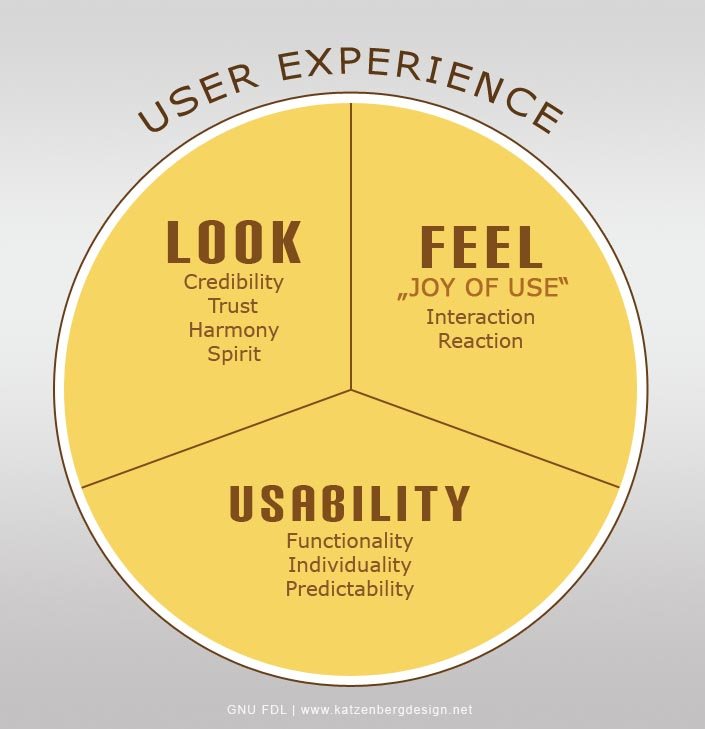Prepare to dive into the exhilarating world of web design, where the ordinary becomes extraordinary and innovation knows no bounds. In this digital age, the power play of user experience has emerged as a game changer, revolutionizing the way we interact with websites. Whether you are a seasoned designer or just starting to explore the intricacies of web creation, this article will unveil the secrets behind the captivating artistry of user experience (UX) design. Brace yourself for an awe-inspiring journey into the realm where creativity meets functionality, as we uncover how UX has become the driving force behind the success of modern websites. So, fasten your seatbelts, we’re about to embark on an electrifying adventure that will reshape your perception of web design forever. Welcome to “. 

 rnrnrn
rnrnrn rnWhen it comes to designing a website, understanding user experience (UX) is the secret weapon that can propel your online presence to new heights. The key lies in creating an intuitive and seamless experience for your users, making them feel not only welcomed but also engaged. By implementing intuitive design strategies, you can enhance user engagement and create a lasting impression.rnrnOne of the crucial aspects of a successful web design is optimizing web navigation. By creating a clear and concise path for users to follow, you can guide them towards desired actions, ultimately leading to higher conversions. A well-organized navigation menu, with relevant categories and easily recognizable icons, helps users find what they need effortlessly and keeps them engaged with your website. When designing your navigation, consider including drop-down menus to provide additional options and streamline the browsing experience. Additionally, incorporating search functionality empowers users to quickly find specific content, saving them time and increasing satisfaction. With optimized web navigation, you can ensure that users stay engaged, explore further, and convert into loyal customers. So, take the time to analyze, refine, and simplify your website’s navigation, and watch your conversions soar.
rnWhen it comes to designing a website, understanding user experience (UX) is the secret weapon that can propel your online presence to new heights. The key lies in creating an intuitive and seamless experience for your users, making them feel not only welcomed but also engaged. By implementing intuitive design strategies, you can enhance user engagement and create a lasting impression.rnrnOne of the crucial aspects of a successful web design is optimizing web navigation. By creating a clear and concise path for users to follow, you can guide them towards desired actions, ultimately leading to higher conversions. A well-organized navigation menu, with relevant categories and easily recognizable icons, helps users find what they need effortlessly and keeps them engaged with your website. When designing your navigation, consider including drop-down menus to provide additional options and streamline the browsing experience. Additionally, incorporating search functionality empowers users to quickly find specific content, saving them time and increasing satisfaction. With optimized web navigation, you can ensure that users stay engaged, explore further, and convert into loyal customers. So, take the time to analyze, refine, and simplify your website’s navigation, and watch your conversions soar.
Q&A
Q: What exactly is user experience (UX) and how does it impact web design?
A: User experience refers to how users perceive and interact with a website or a digital product. It encompasses various factors such as ease of use, accessibility, responsiveness, and overall satisfaction. UX has a significant influence on web design as it dictates how users engage with a website, ultimately determining its success or failure.
Q: Why is user experience considered a game changer in web design?
A: User experience has revolutionized web design by shifting the focus from aesthetics alone to user-centric practices. By prioritizing how users interact with a website and ensuring a seamless and enjoyable experience, UX aims to enhance user satisfaction, increase engagement, and drive conversion rates. This shift in perspective has transformed web design into a pivotal element for online businesses.
Q: How can UX be incorporated into web design effectively?
A: Incorporating UX into web design involves several key steps. Firstly, designers must conduct thorough user research to understand the target audience, their needs, and pain points. Secondly, the information architecture and site structure must be carefully planned to ensure easy navigation and content discoverability. Thirdly, designers must create intuitive and visually appealing interfaces, optimized for various devices and accessibility requirements. Finally, regular user testing and analysis are crucial to identify any areas for improvement and iterate the design accordingly.
Q: What are some common UX mistakes that web designers should avoid?
A: One common UX mistake is overcomplicating the user interface with excessive elements or complex navigation, which can confuse and frustrate users. Another mistake is neglecting mobile optimization, as a growing number of users access websites through their smartphones or tablets. Ignoring accessibility requirements, such as providing alternative text for images or implementing proper color contrast, is also a significant oversight. Lastly, failing to continuously evaluate and adapt the website based on user feedback can hinder its effectiveness.
Q: How does UX impact website traffic and conversion rates?
A: A positive user experience can significantly impact website traffic and conversion rates. Websites that prioritize usability and meet user expectations tend to attract visitors, increase engagement, and encourage repeat visits. In contrast, a poor user experience can lead to high bounce rates, low engagement, and decreased conversion rates. By focusing on UX design principles, web designers can create a compelling user journey that converts visitors into loyal customers.
Q: Can you provide examples of websites that have successfully utilized UX to their advantage?
A: Sure! Take Airbnb, for instance. By implementing a user-friendly search interface, intuitive filters, and personalized recommendations, Airbnb provides a seamless booking experience, creating a sense of trust and convenience. Another example is Apple’s website, which features clean and straightforward design, effortless navigation, and clear calls to action, resulting in an engaging and memorable user experience.
Q: How does UX contribute to the overall branding and reputation of a company?
A: UX plays a crucial role in shaping a company’s branding and reputation. A well-designed website that provides a positive and memorable user experience can have a long-lasting impact on how users perceive a brand. When users have a seamless and enjoyable interaction with a website, they are more likely to associate positive emotions with the brand, leading to increased brand loyalty and a positive reputation.
Q: Is it possible to achieve a strong user experience on a limited budget?
A: Absolutely! While having a substantial budget can undoubtedly provide more resources and flexibility, creating a strong user experience is achievable on a limited budget. By focusing on understanding your target audience, conducting user testing, and prioritizing critical usability aspects, you can make informed design decisions that maximize the user experience while keeping costs in check. Additionally, leveraging open-source frameworks and collaborating with skilled UX professionals can also be cost-effective solutions.
In Retrospect
In conclusion, “” unveils the captivating realm where digital experiences come to life. As we have delved into the intricacies of UX design, the impact it has on user engagement and satisfaction emerges as an undeniable force in the ever-evolving landscape of the web.
Navigating this game changer requires a delicate blend of creativity and technical prowess; a harmonious symphony of aesthetics, usability, and functionality. It highlights the essence of understanding and empathizing with our fellow digital adventurers – the users – and crafting experiences that captivate, engage, and leave them yearning for more.
More than just a buzzword, UX design represents an unprecedented opportunity for businesses and individuals alike to forge meaningful connections in the digital landscape. It breathes life into websites, applications, and online platforms, creating an immersive journey that transcends mere functionality. It is the secret ingredient that transforms an ordinary web presence into a captivating masterpiece, leaving an indelible mark on the hearts and minds of users.
As we move forward, let us embrace the power play of user experience, weaving it into the very fabric of our digital presence. Let us strive to create experiences that surprise and delight, seamlessly blending aesthetics with functionality, and transcending the boundaries of the screen to touch the hearts of every user.
In this game-changing era, where user experience reigns supreme, every tap, swipe, or click invites us to embark on a journey of endless possibilities. So, let us dare to dive deeper into the rabbit hole, to unlock new dimensions of digital enchantment, and to forever change the way we design for the web.
For in the realm of user experience, the power is undeniably ours to shape. Let us wield it wisely, conscientiously, and with boundless creativity. Only then will we truly harness the transformative magic that lies within the power play of user experience.

